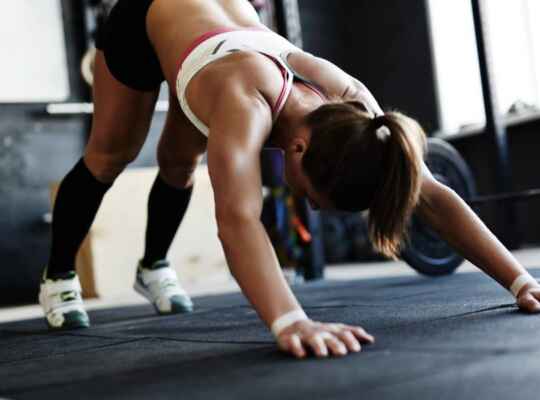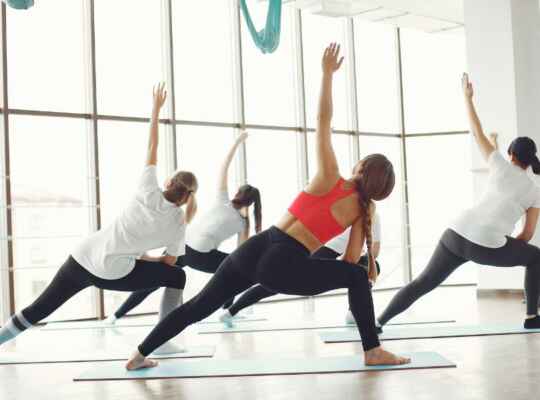- Launch Your Training Today! We're available 24/7 by Appointment Only.
- (615) 329-2747
- info@nextlevelfitness.com
Why is it Important to Assess Muscle Balance?
How to Increase Your Endurance and Stamina
April 17, 2024Effective Training Methods to Improve Your VO2 Max
May 9, 2024Assessing muscle balance is key to understanding how your body copes with gravity. Your muscles, all 600 of them, work as teams—some drive motion while others oppose it. Over time and through activities like sports or jobs that demand physical effort, certain muscles may become stronger than their counterparts.
This leads to imbalance, which affects posture and movement efficiency. By incorporating a corrective exercise program into your routine, you can target these imbalances directly, promoting better alignment and reducing strain on the neuromotor system that coordinates every action from walking to running.
Understanding Muscle Balance Fundamentals
You want your body to move well and feel good. Keeping muscles balanced matters as you live, work out, or just play. Imagine they’re teams working together—some pulling while others relaxing.
If one side is weak or too tight due to life’s wear and tear, other muscles jump in to pick up the slack. As we age and fight gravity daily, our bodies find ways to cope. But over time, this can lead to ‘itis,’ fancy talk about inflammation from using parts of us too much because they’re trying so hard when there’s imbalance.
Are you trying to get things back on track? Corrective exercise helps retrain those off-balance parts by focusing on where you need it most. Aligning that muscle teamwork can make all the difference in taking on whatever moves you have planned without feeling held back.
Identifying Common Muscle Imbalances
Muscle imbalances occur when one muscle is stronger than its opposing group. This leads to poor posture, joint pain, and even injury. For instance, sitting often can weaken the glutes while tightening hip flexors.
Look for signs like uneven shoulders or hips; they often hint at deeper imbalances beneath the surface. Let’s break that down: Your body has muscles meant to work in pairs; think biceps and triceps. But life habits mess this up sometimes.
That may weaken back thigh muscles, but the front ones are tight! Seeing things out of line (like lopsided shoulders) likely means your muscle balance needs help. You need strong yet flexible muscles around each joint for real strength and less hurt from day-to-day tasks or sports moves gone wrong.
Benefits of a Balanced Musculature
If your muscles work harmoniously, each movement is smooth—there is no hitch or pull from weaker spots. Corrective exercises can fix these imbalances.
Take self-myofascial release; it loosens tight spots using tools like foam rollers to soften knots and ease tension. We target specific areas for strength: glutes, hamstrings—the whole back of the leg and core, too! Simple moves can build this up.
Think hip bridges or step-ups; they’re great for strengthening those muscles. The Romanian version works more than just legs; it hits the all-important posterior chain that supports plenty of daily movements and keeps injuries at bay. Always remember to keep form top-notch, though. That’s non-negotiable if you want real gains without harm.
Use bands or pads as needed; they’re there for better execution when machines aren’t around.
Link Between Muscle Balance and Injury Prevention
You’re more likely to get hurt when your muscles are off balance. Picture a weightlifter: they need their strength to be even, or they could drop the bar. Now think of that in daily life; if one side is weaker, it strains and might lead to injury during normal moves like bending or lifting.
In a study with students doing an 8-week training focused on balancing muscle power, results showed improved physical functions, like better push-ups and back extensions—not seen just by working out as usual. So checking and fixing these imbalances means less risk when moving around daily, plus potentially upping your game in sports.
Assessing Your Muscle Symmetry
Assessing your muscle symmetry is key to a solid workout plan. Look at lifters; they worry about uneven back growth from deadlifting with the same grip or feeling the weight shift in squats. Side imbalances aren’t rare – you find them in soccer, softball, and even non-athletes.
We favor one side naturally for actions like writing and kicking. Studies show this can lead to real differences: more muscle fibers on one leg over time without exercise! And bodies are built off-balance, too. Most have slightly different femur rotations and leg lengths.
When lifting weights, these asymmetries often mean we’re not moving evenly. For bodybuilding, where looks count, it matters big time! Keep an eye on how symmetrical you are; it could tweak performance or just keep things fair between the left and right sides.
Improving Performance with Corrective Exercises
Corrective exercises are key to fixing muscle imbalances. Think of your muscles as a team; they must work together correctly. If one slacks, others must do more, which isn’t good. This may cause pain or injury because when you move, if everything’s not in sync, it can hurt and ruin form, too.
Athletes doing the same moves over and again are at risk here. But with corrective exercises done first in workouts, we boost their performance by ensuring each part does its job correctly—no overdoing it! This matters for anyone lifting weights or playing sports since avoiding strain is crucial; it keeps them safe on the field and in the gym.
Doing these before regular training preps body and mind, too.
Maintaining Long-term Musculoskeletal Health
You need to keep those bones and joints moving well for years. Think about a plan that helps if your body hurts or gets weaker. This way, you stay ahead of troubles like bad back pain or stiff knees, which can happen as we age; these issues are big reasons people feel older than they should.
The right exercise mix fixes muscle imbalances that might lead to pain or even bone breaks. Muscle conditions affect one out of every four individuals worldwide, making it key for us all to work on staying strong and supple through life’s stages. The aim is simple: do what keeps you fit without harm so your body won’t hold you back from living full days with ease.
Assessing muscle balance helps you spot imbalances that may lead to injury. At Next Level Fitness, experts analyze your posture and movement patterns, pinpointing improvement areas. This approach not only prevents pain but also boosts overall fitness.
Tailored corrective exercises from qualified specialists ensure muscles work harmoniously, enhancing strength and flexibility. Don’t let imbalance hinder progress; choose proactive assessment for peak performance and longevity in your physical endeavors.
Warning: Trying to access array offset on value of type null in /var/www/wp-content/themes/betheme/includes/content-single.php on line 286




